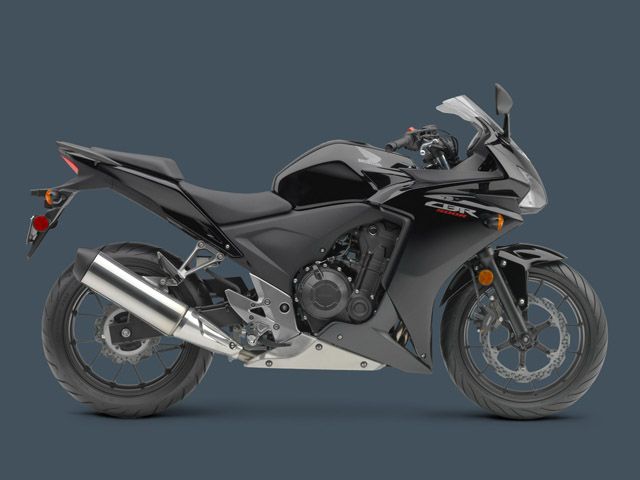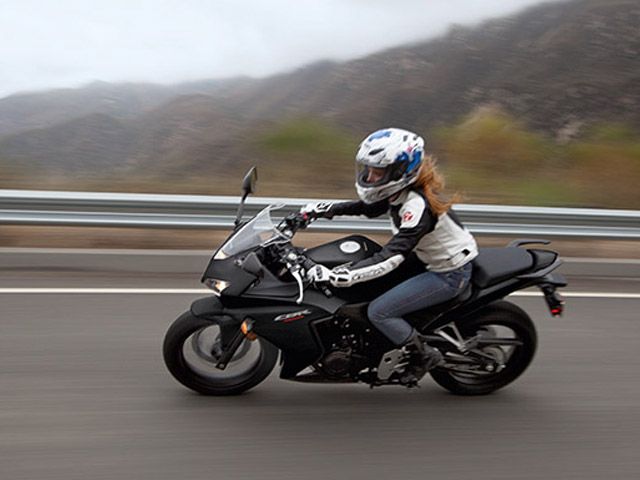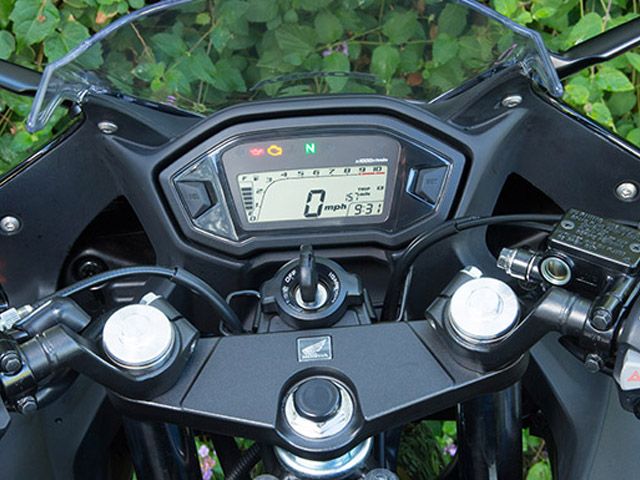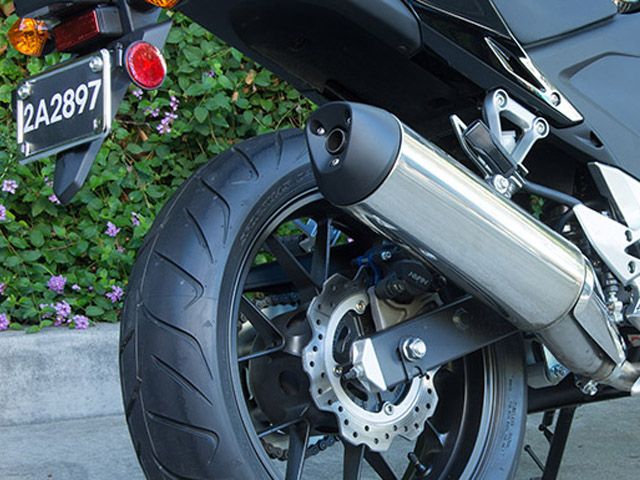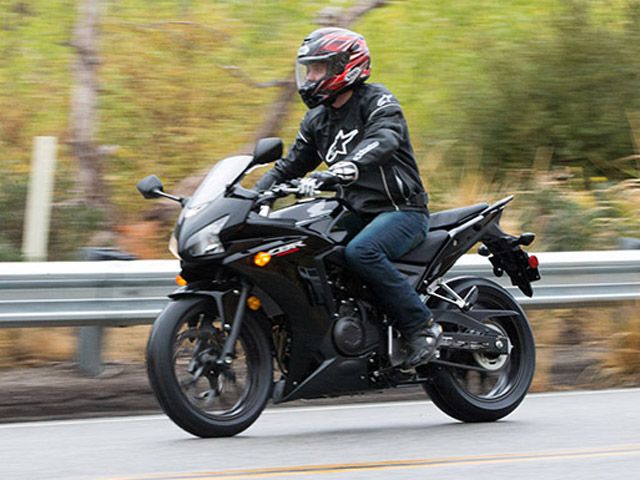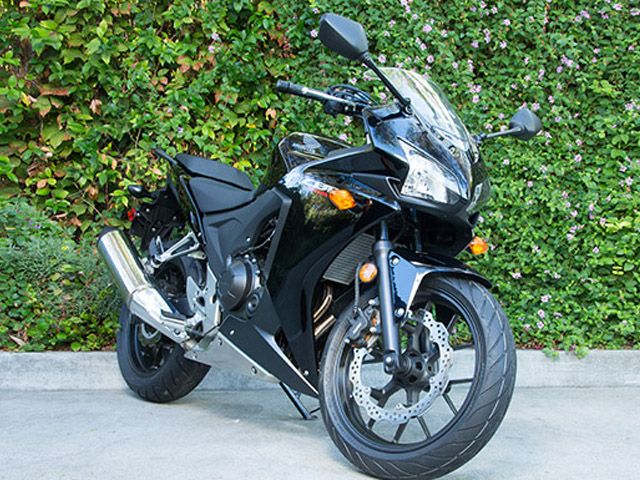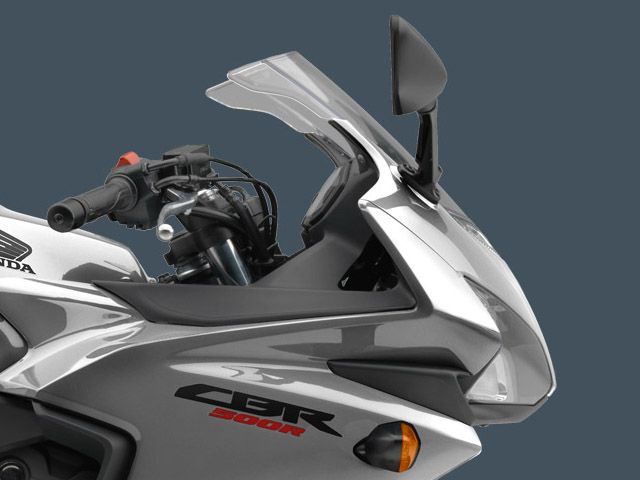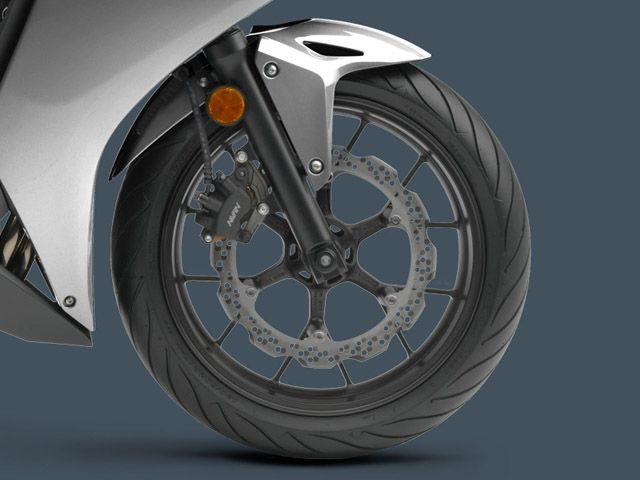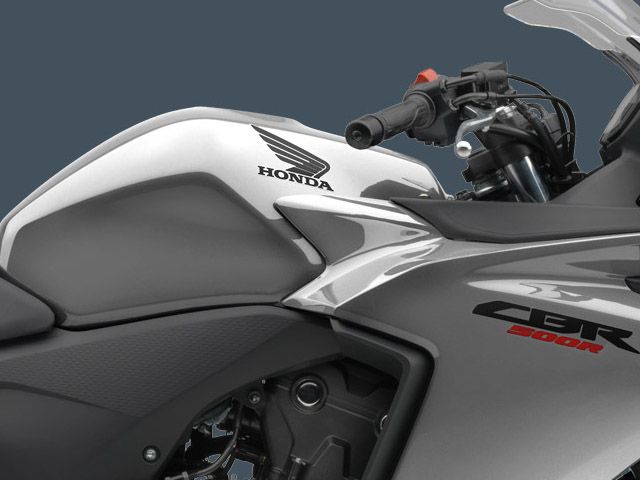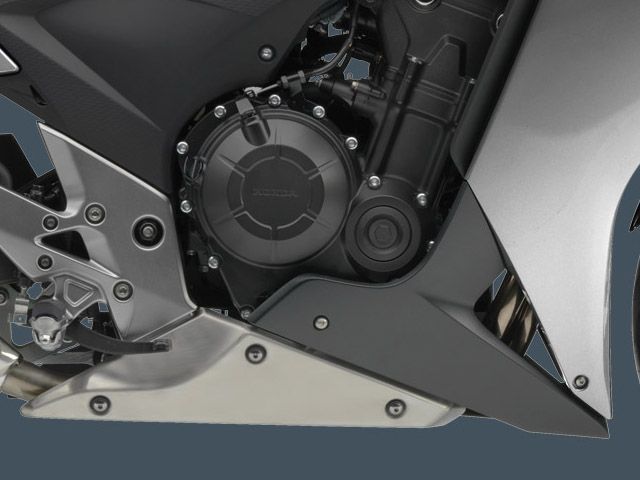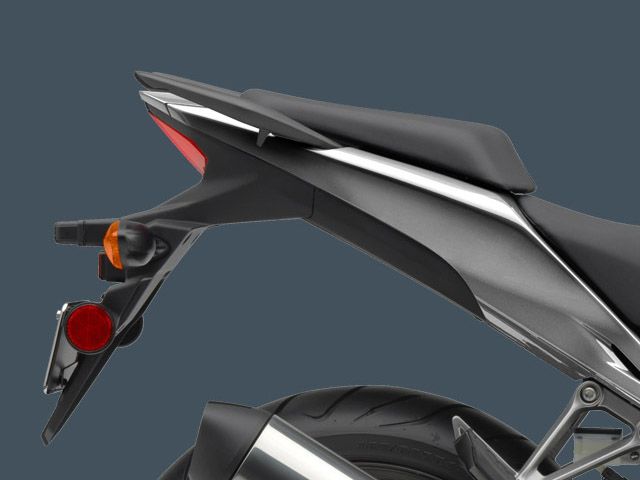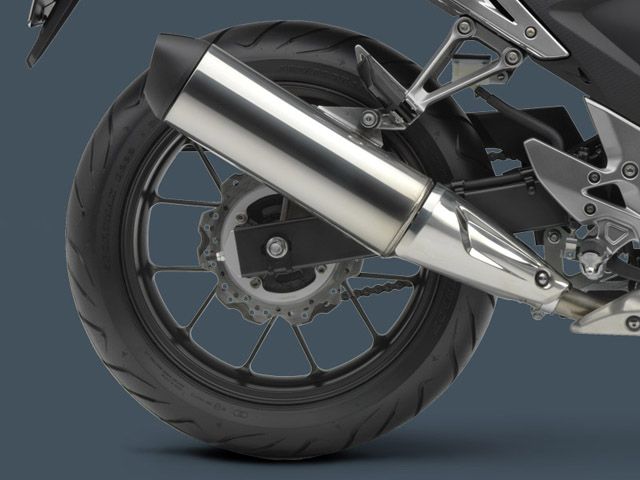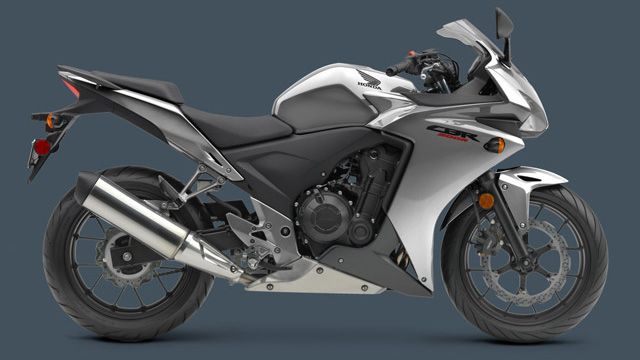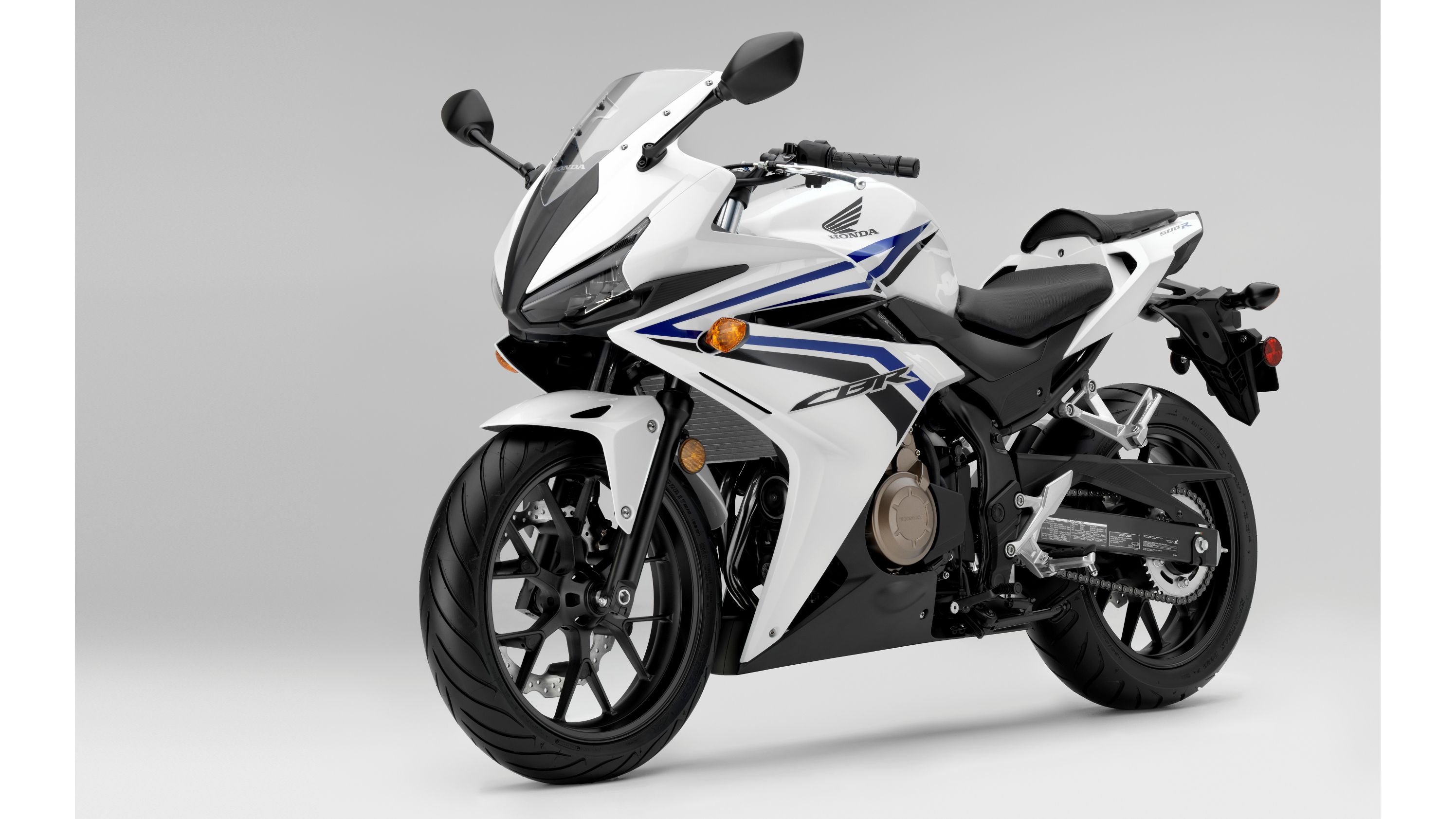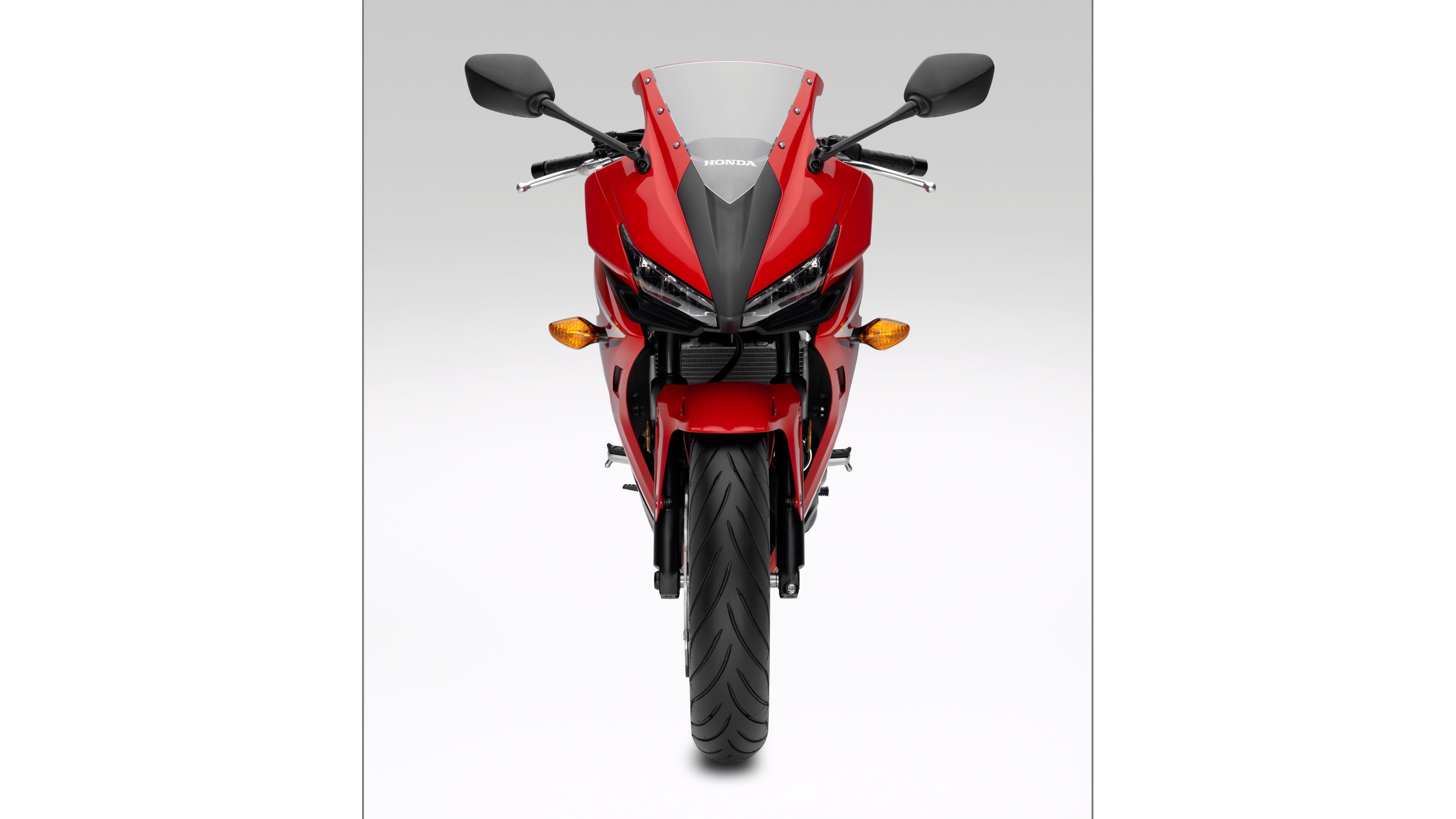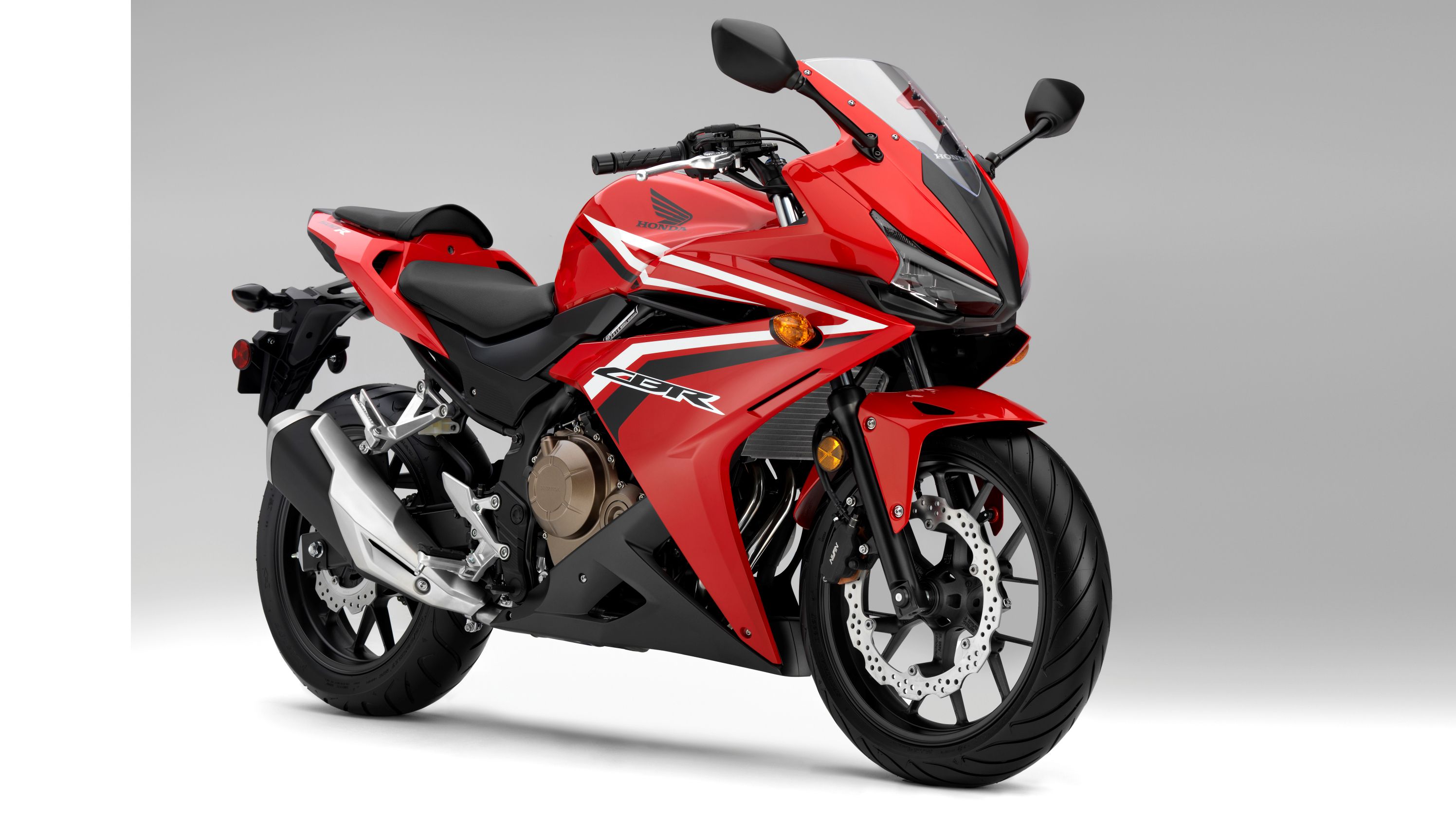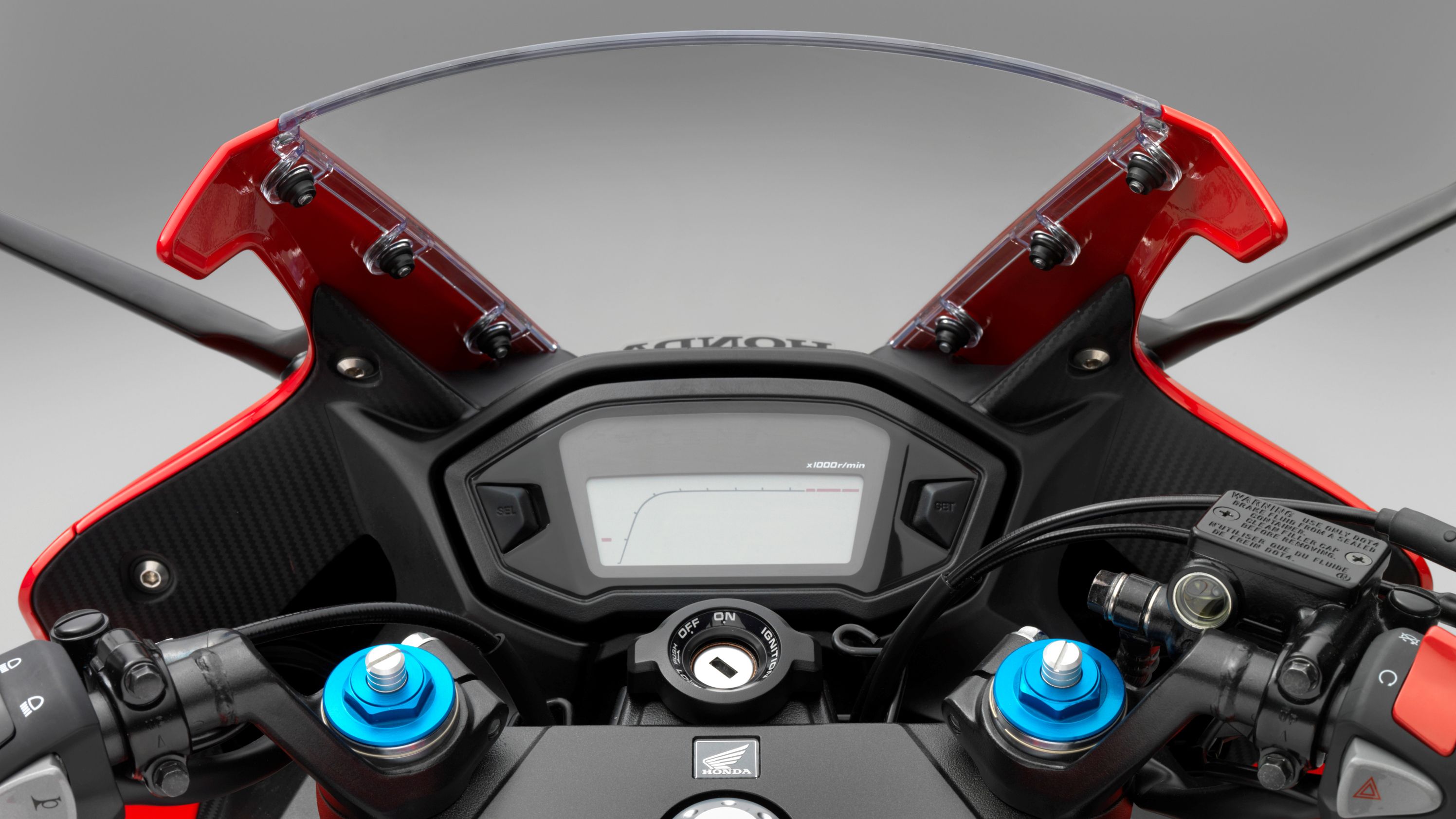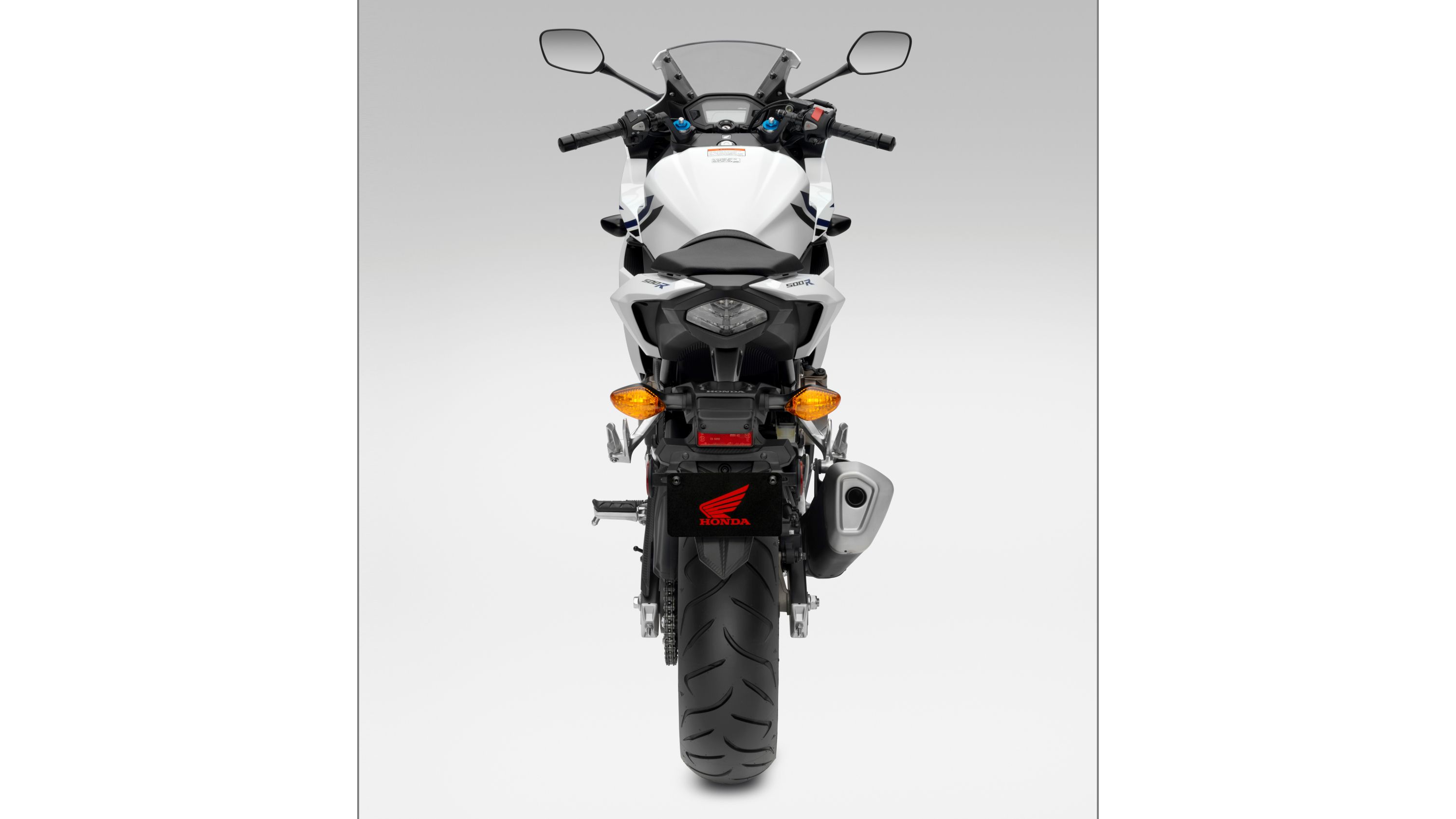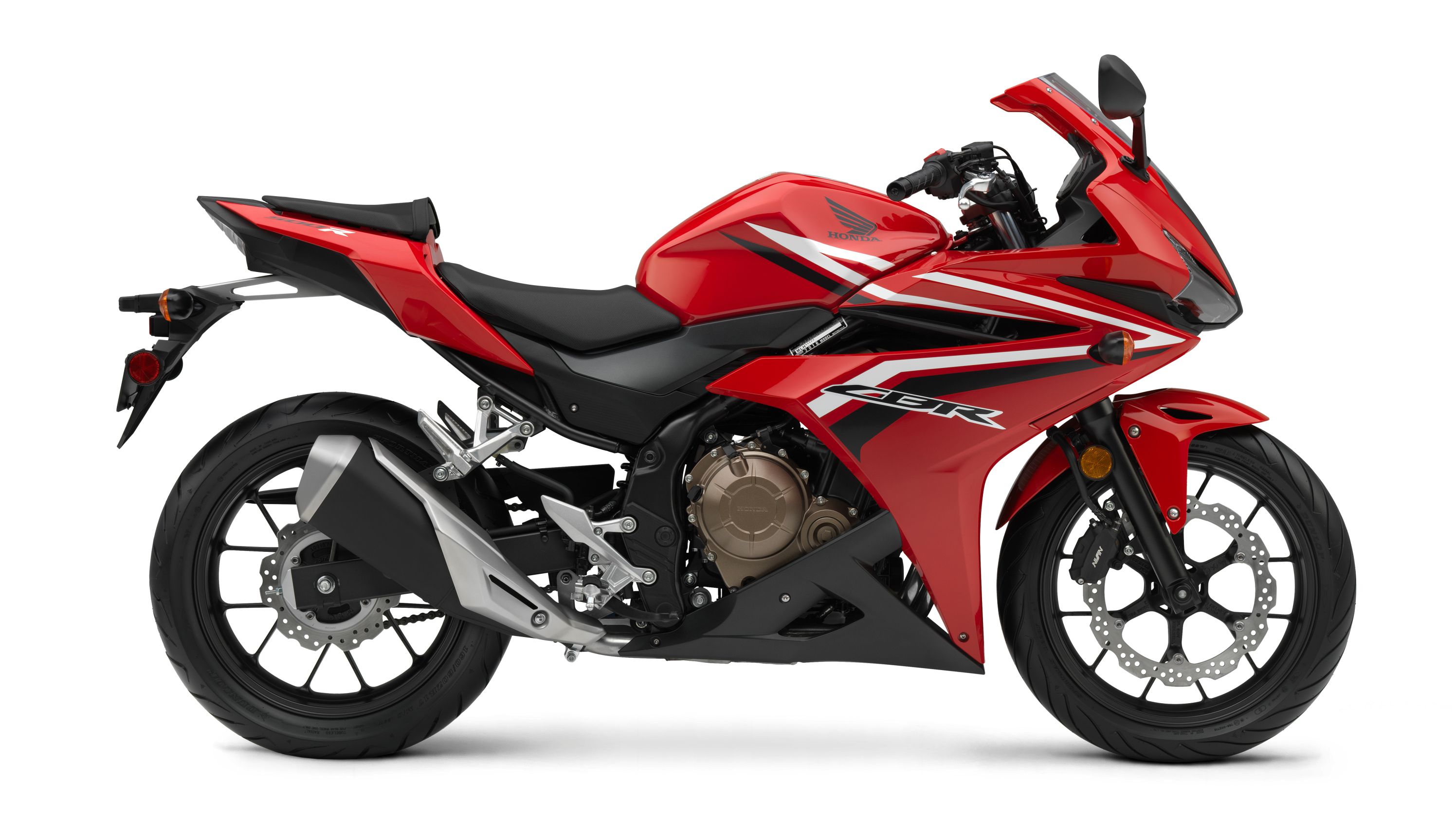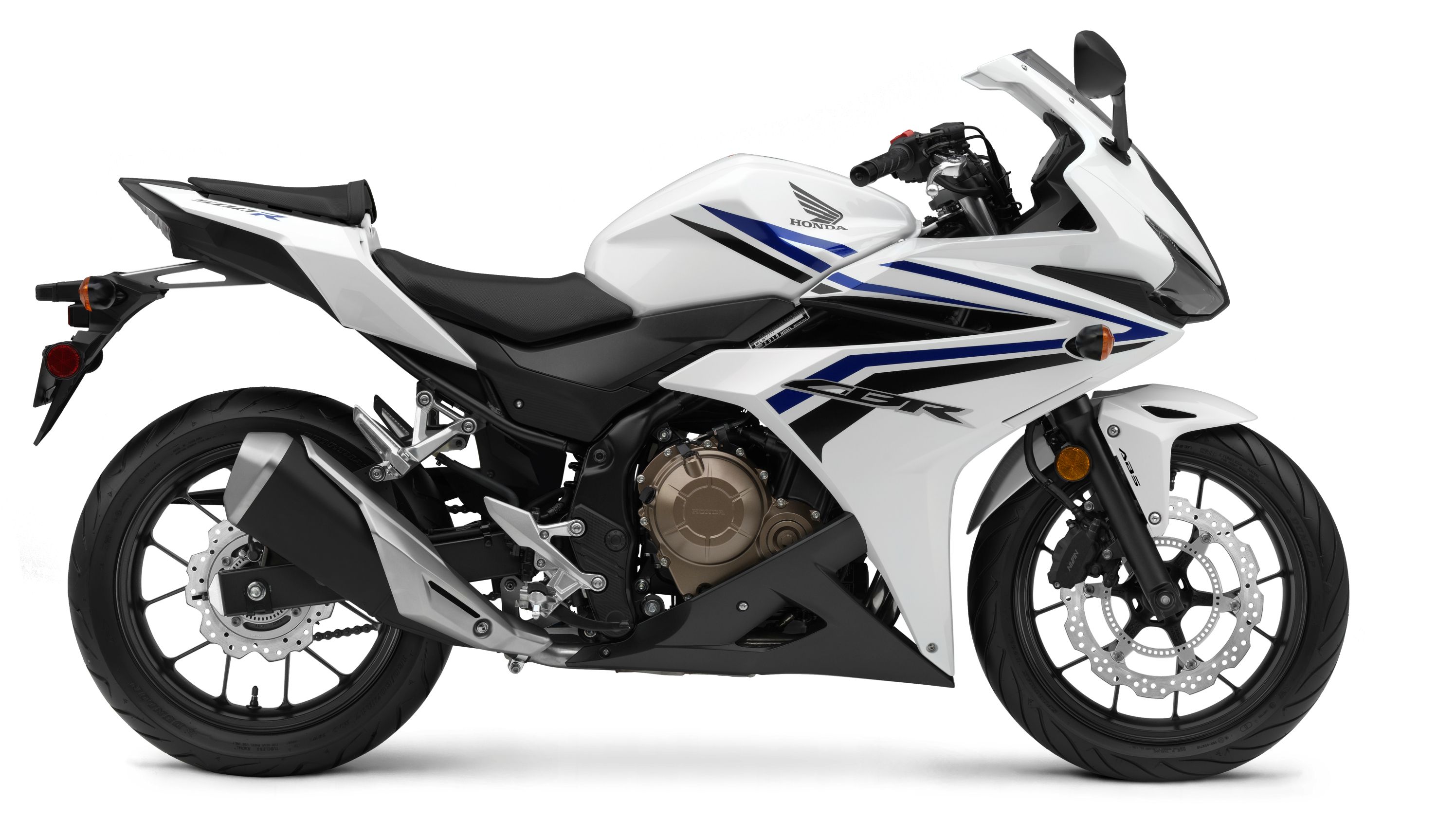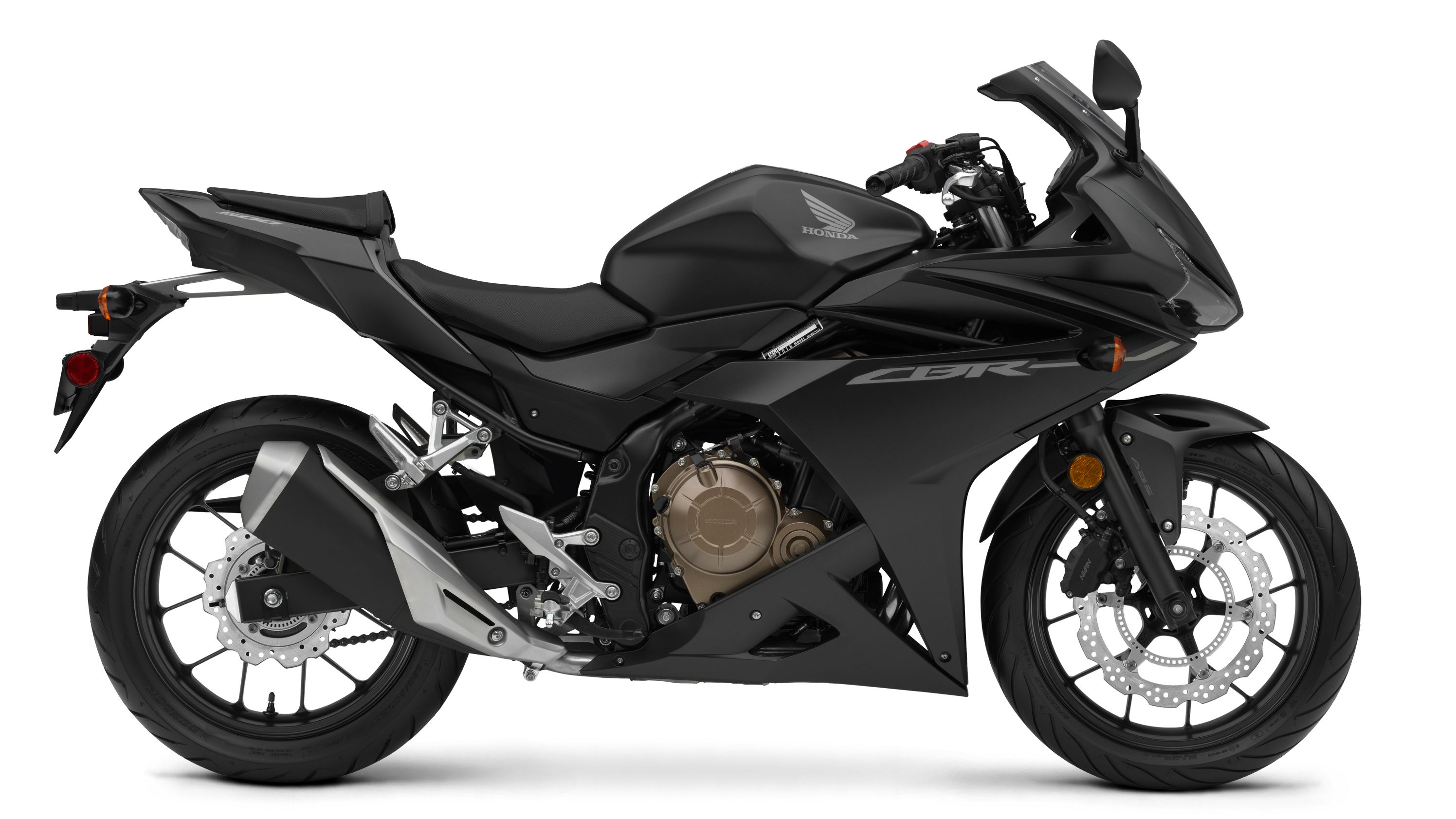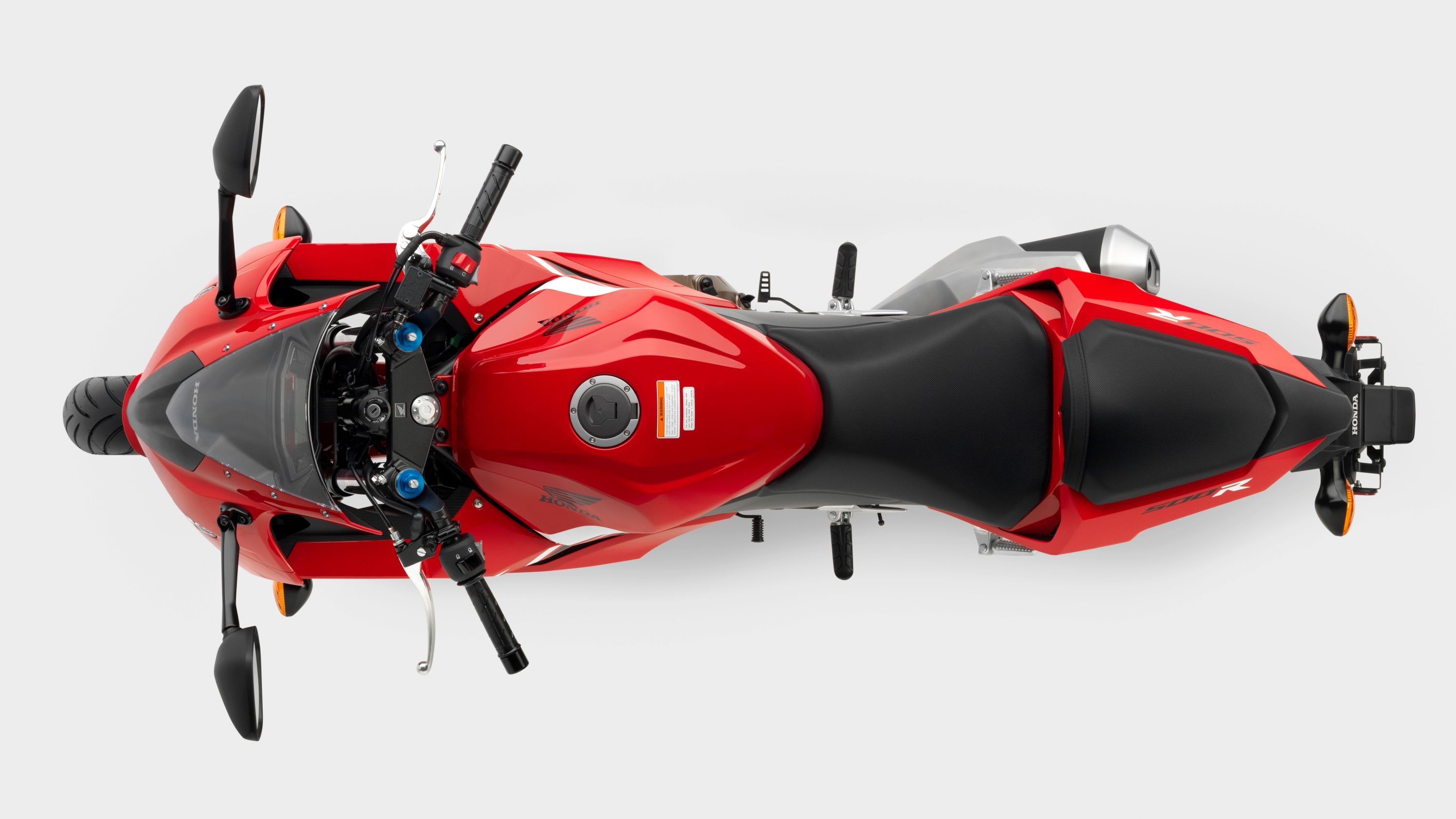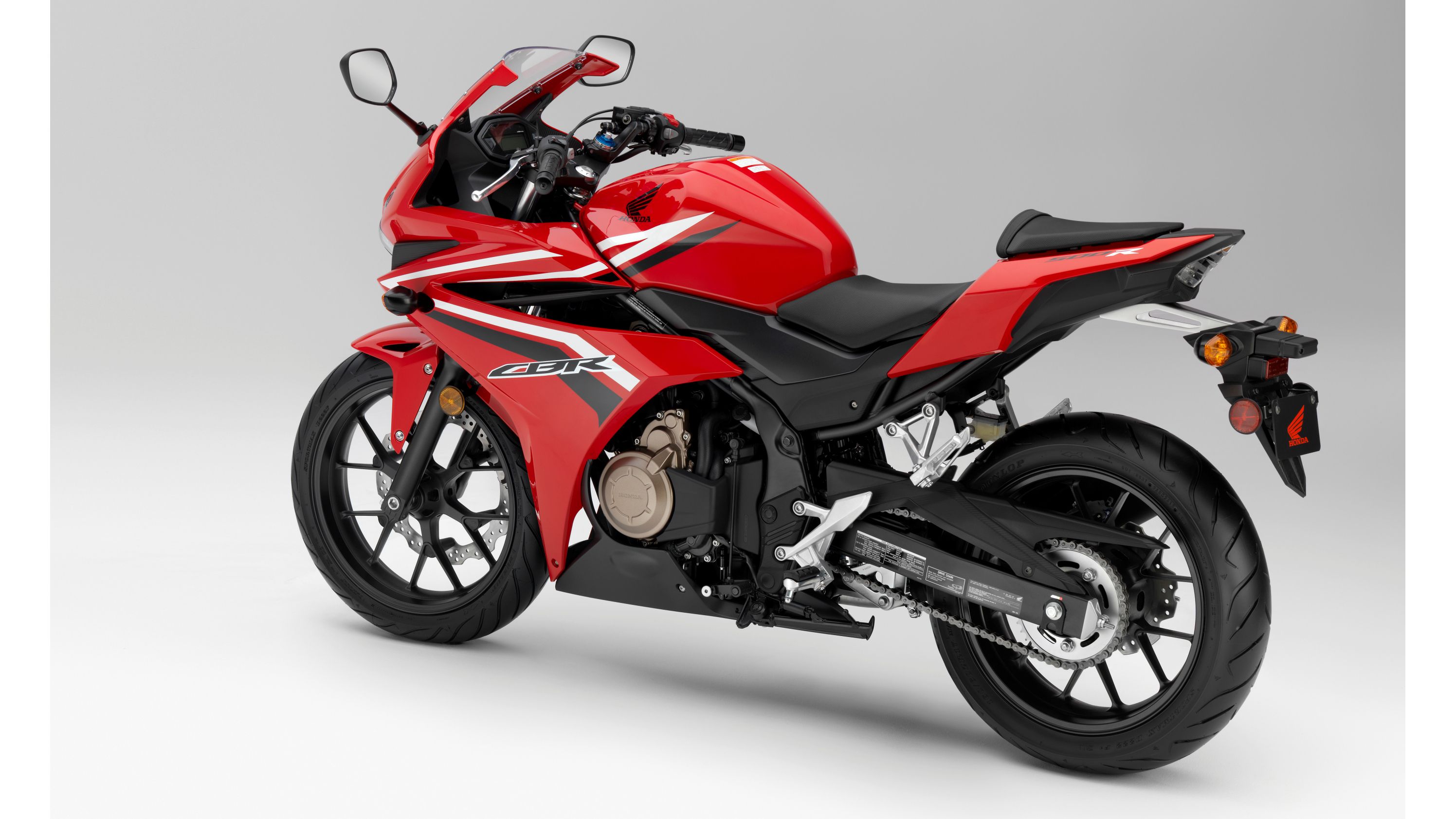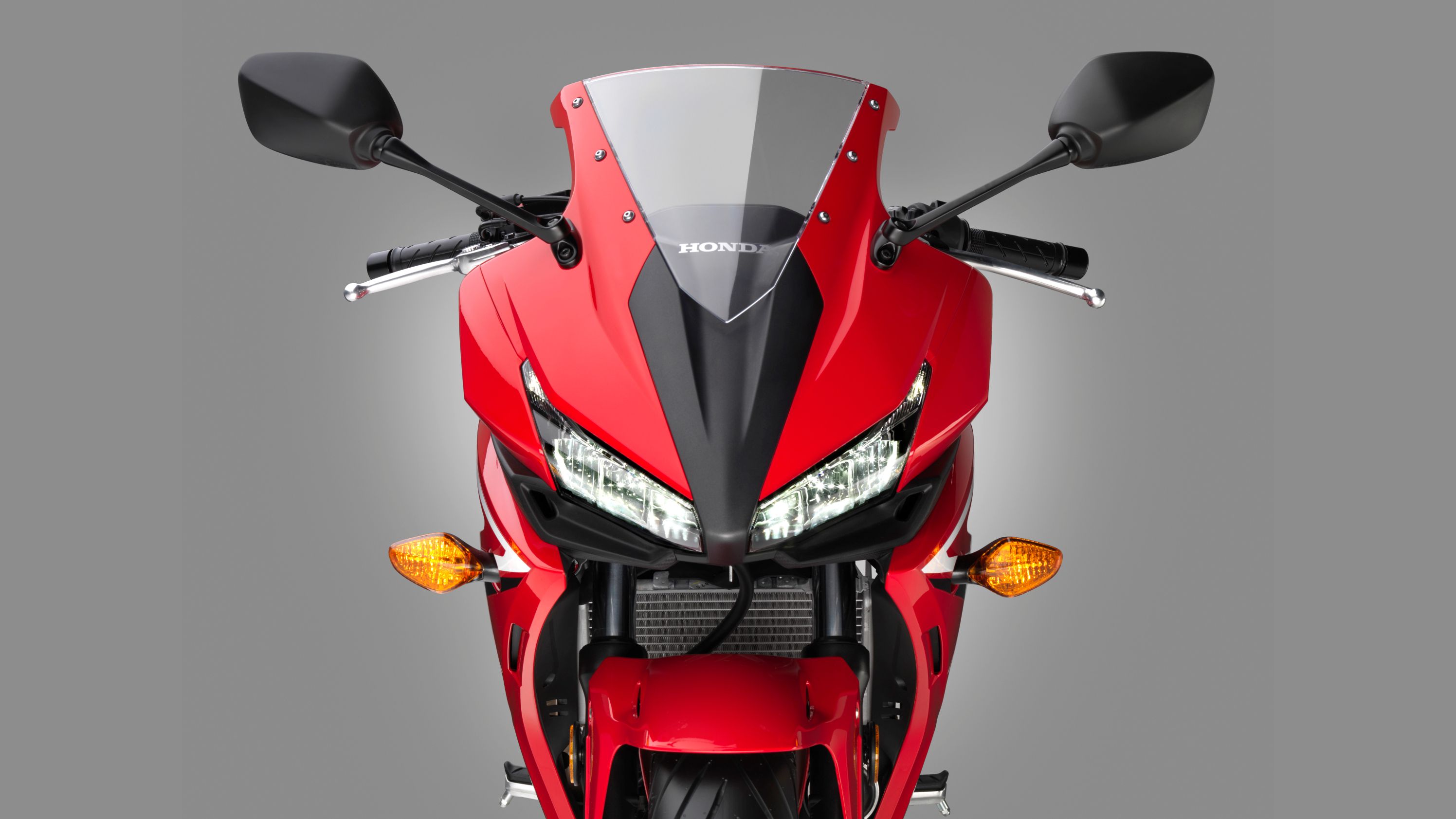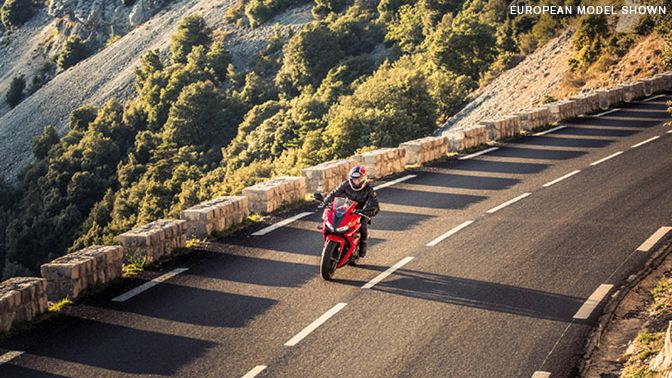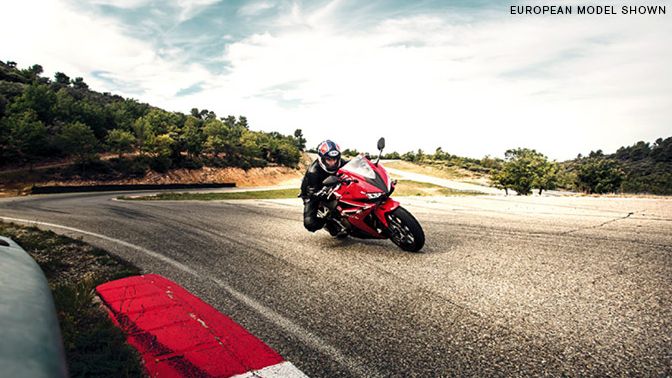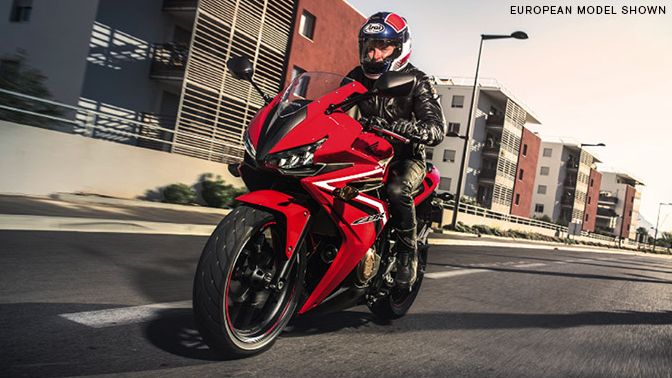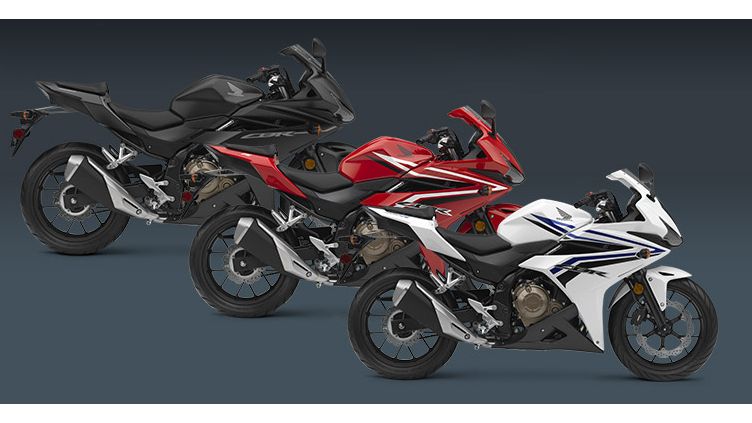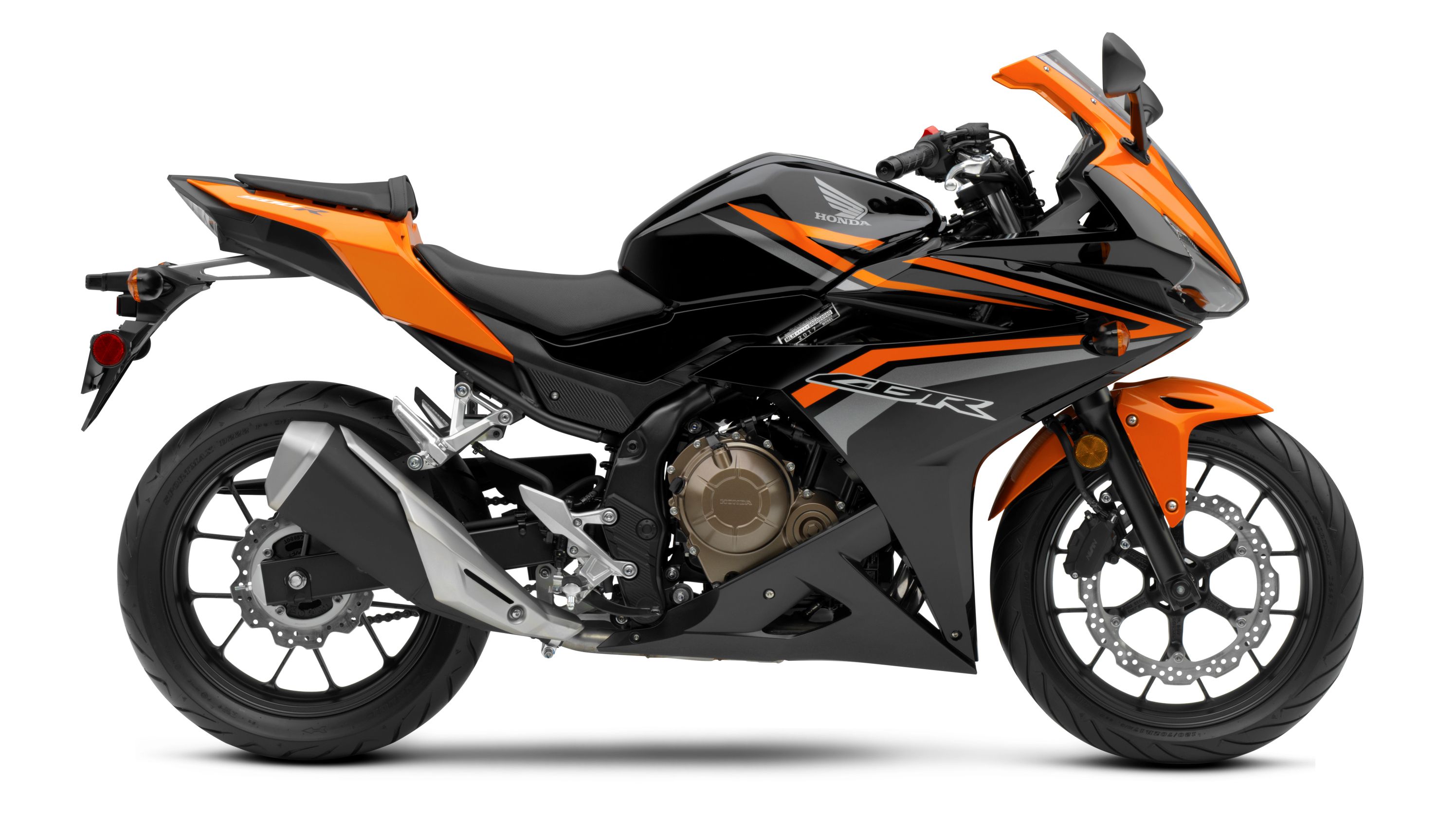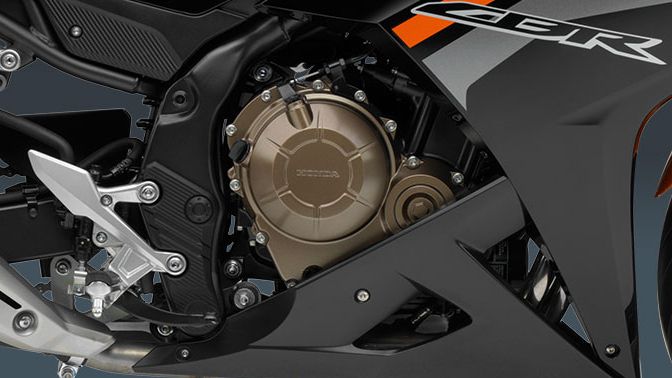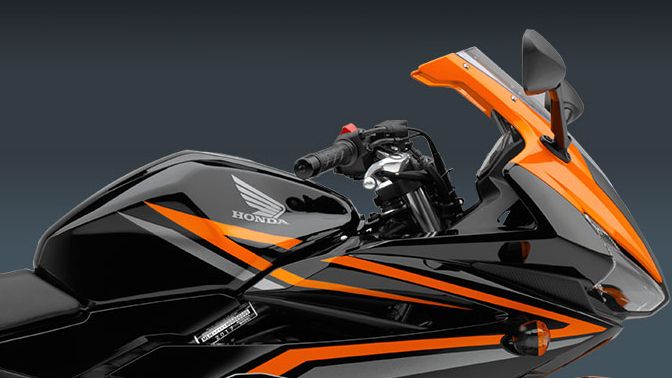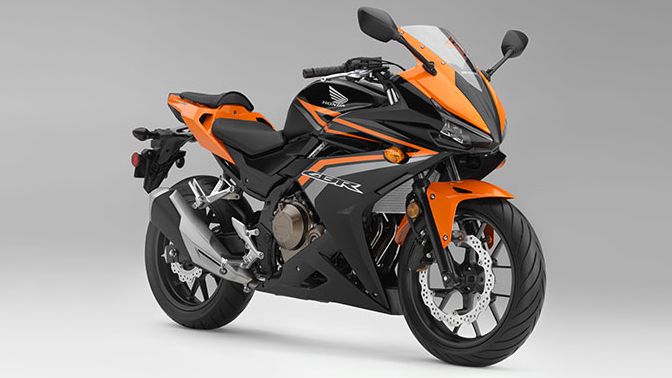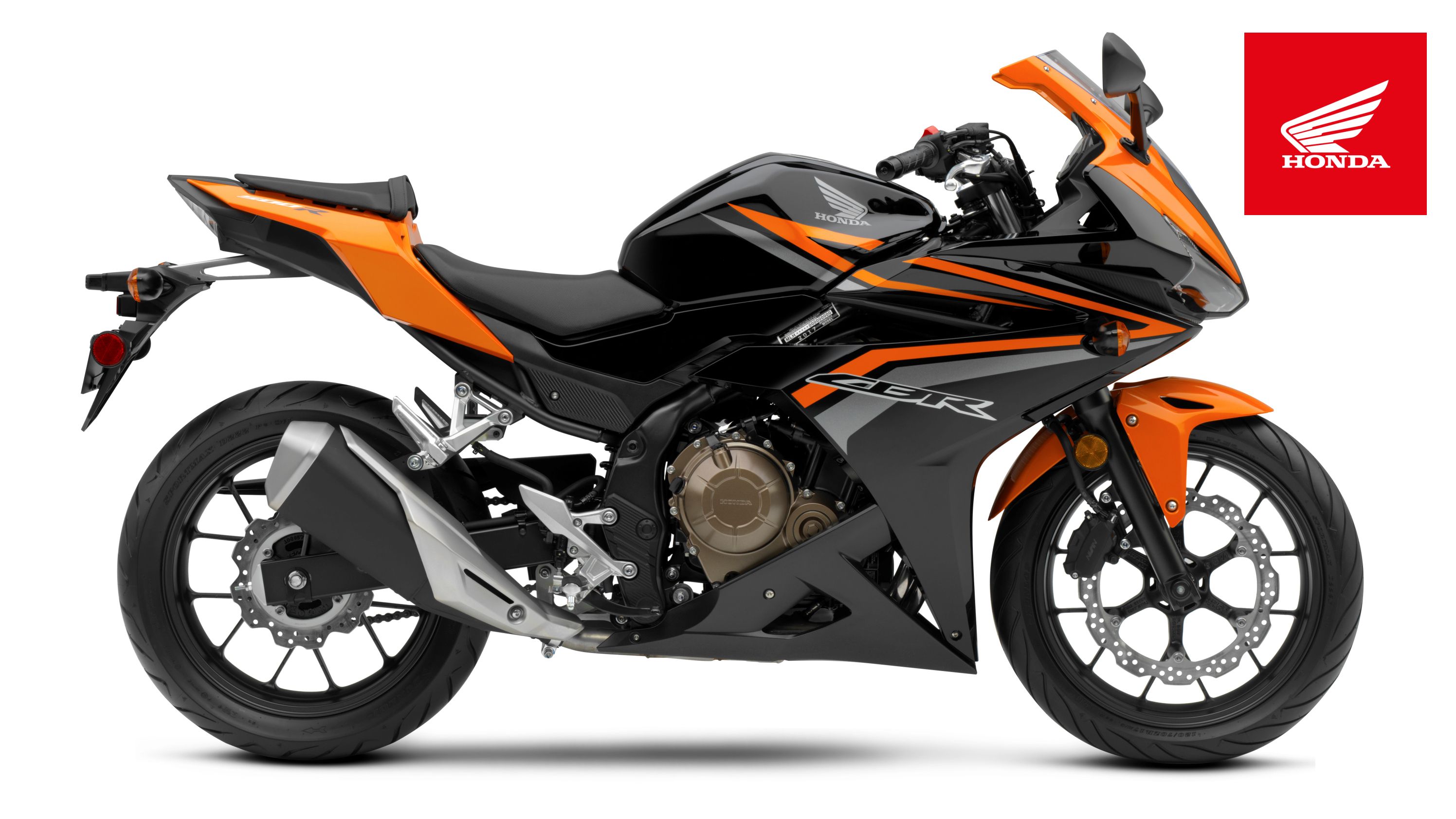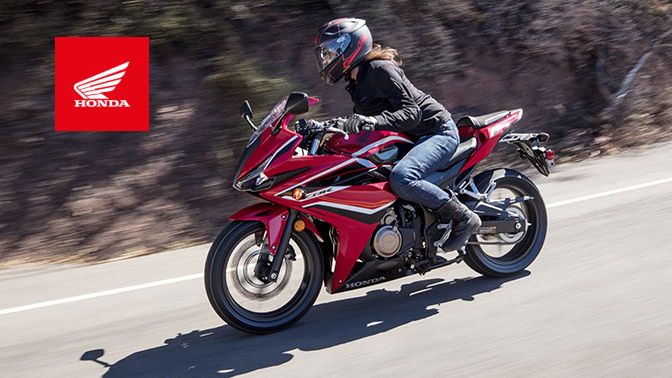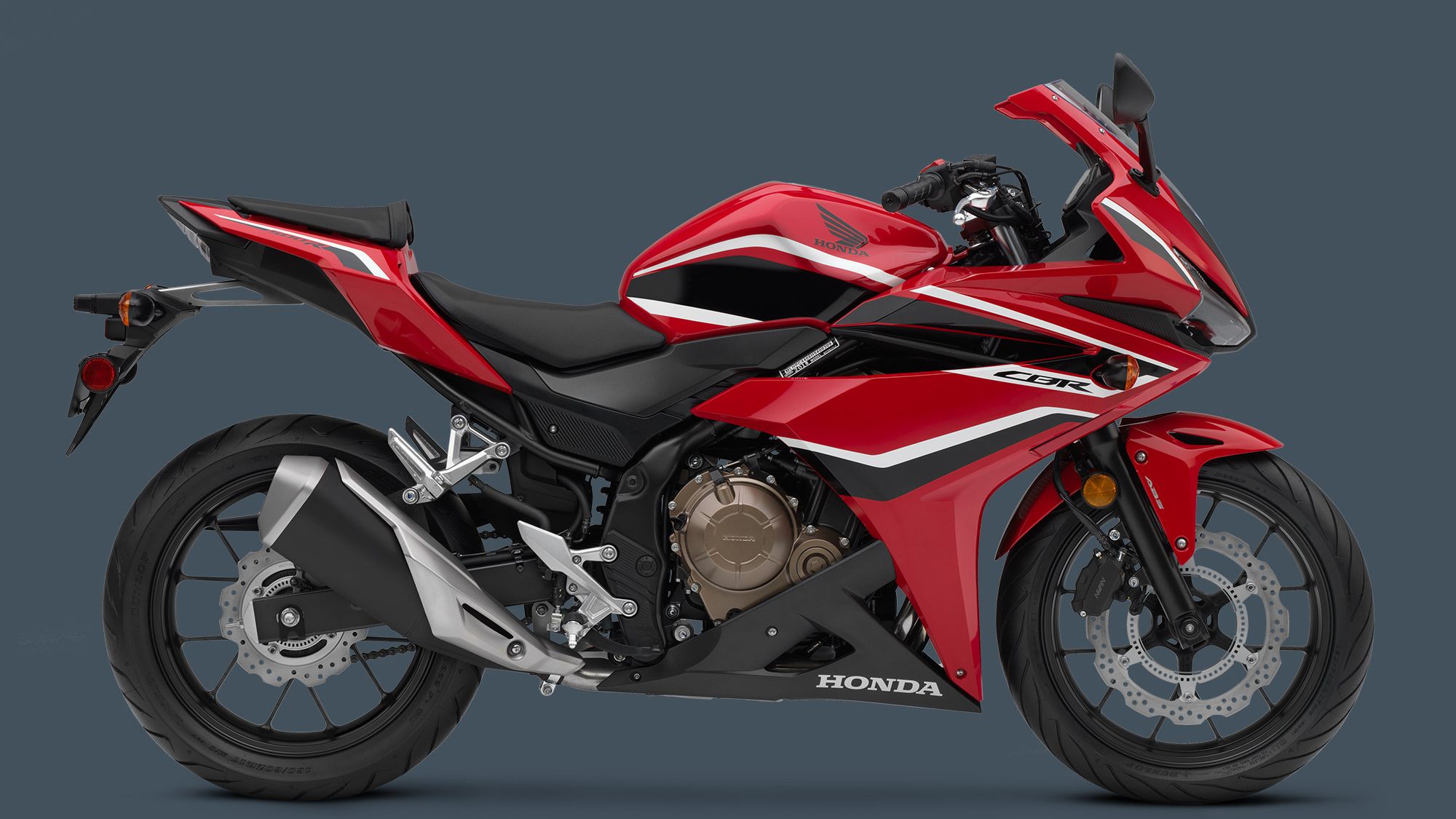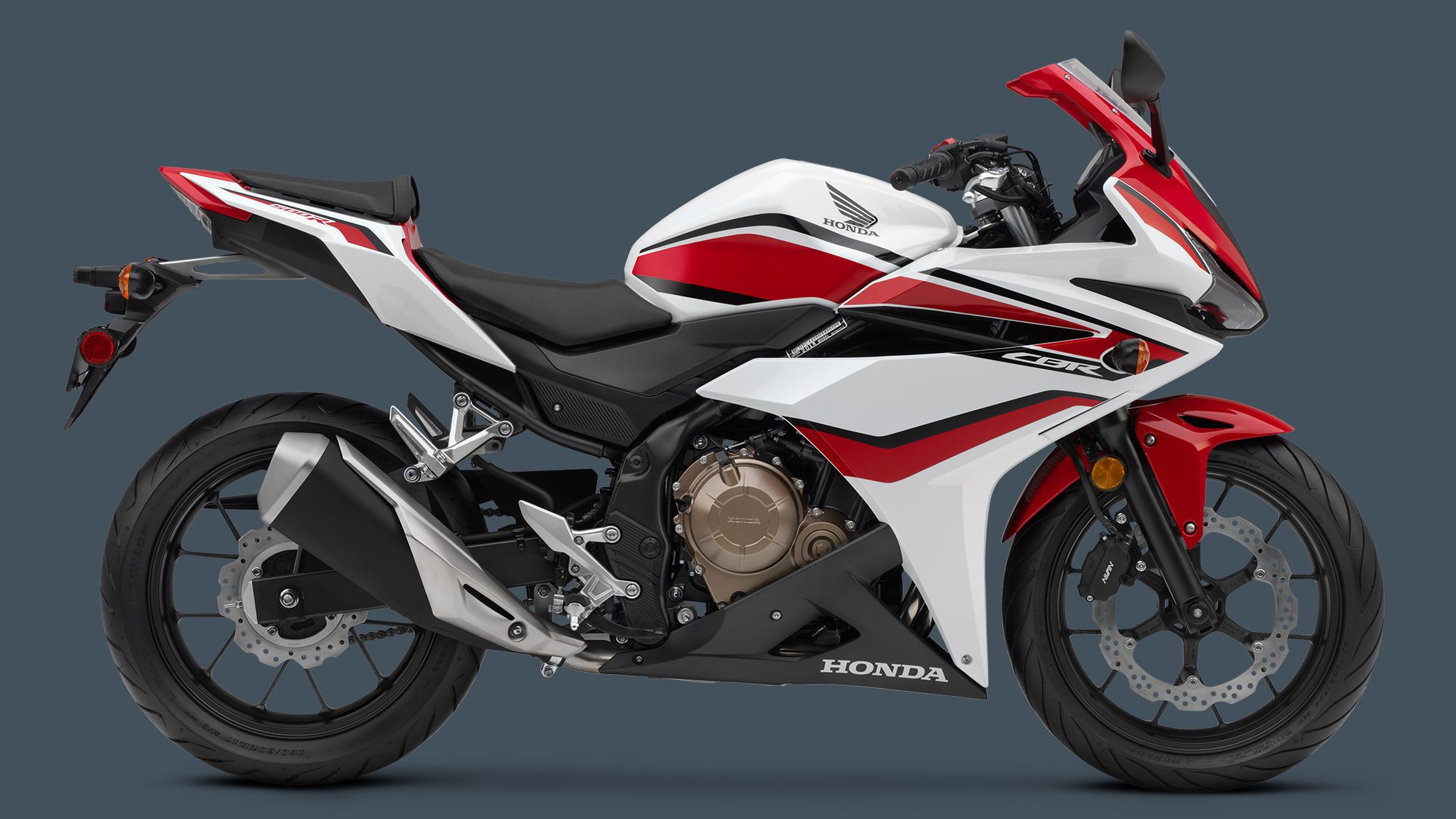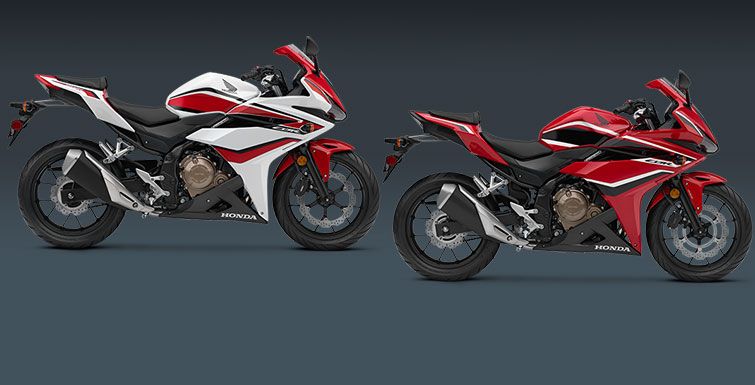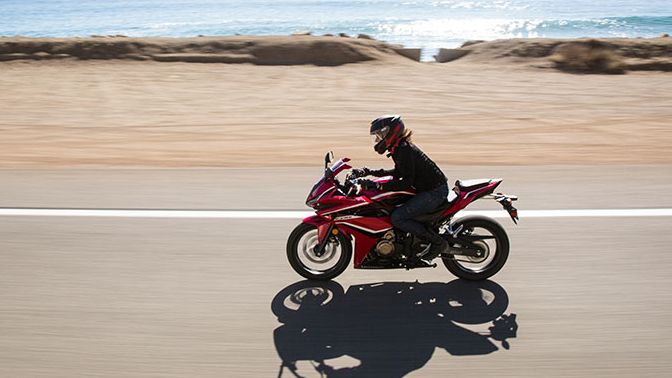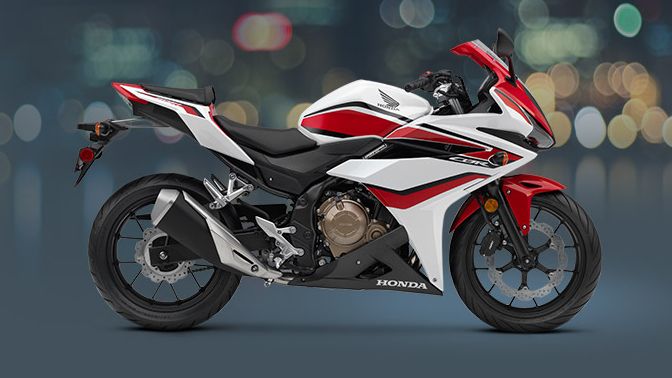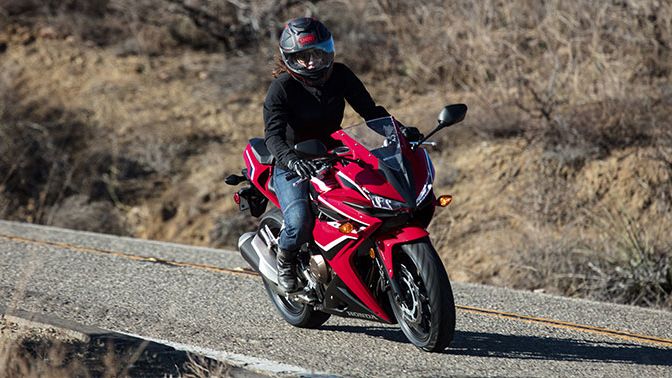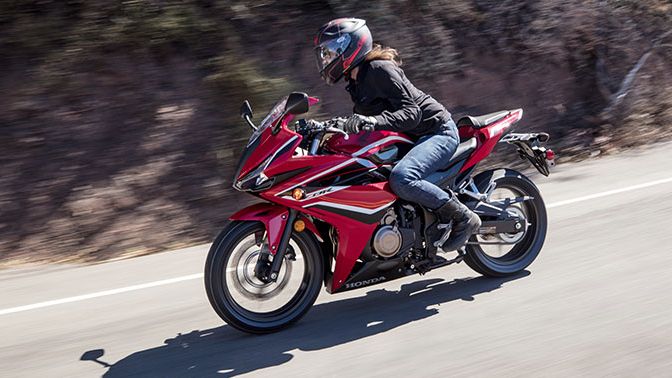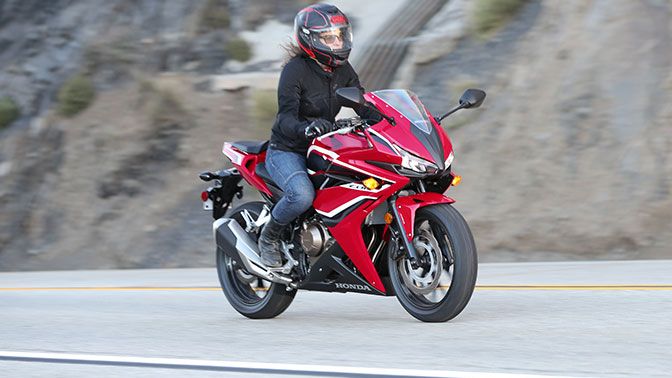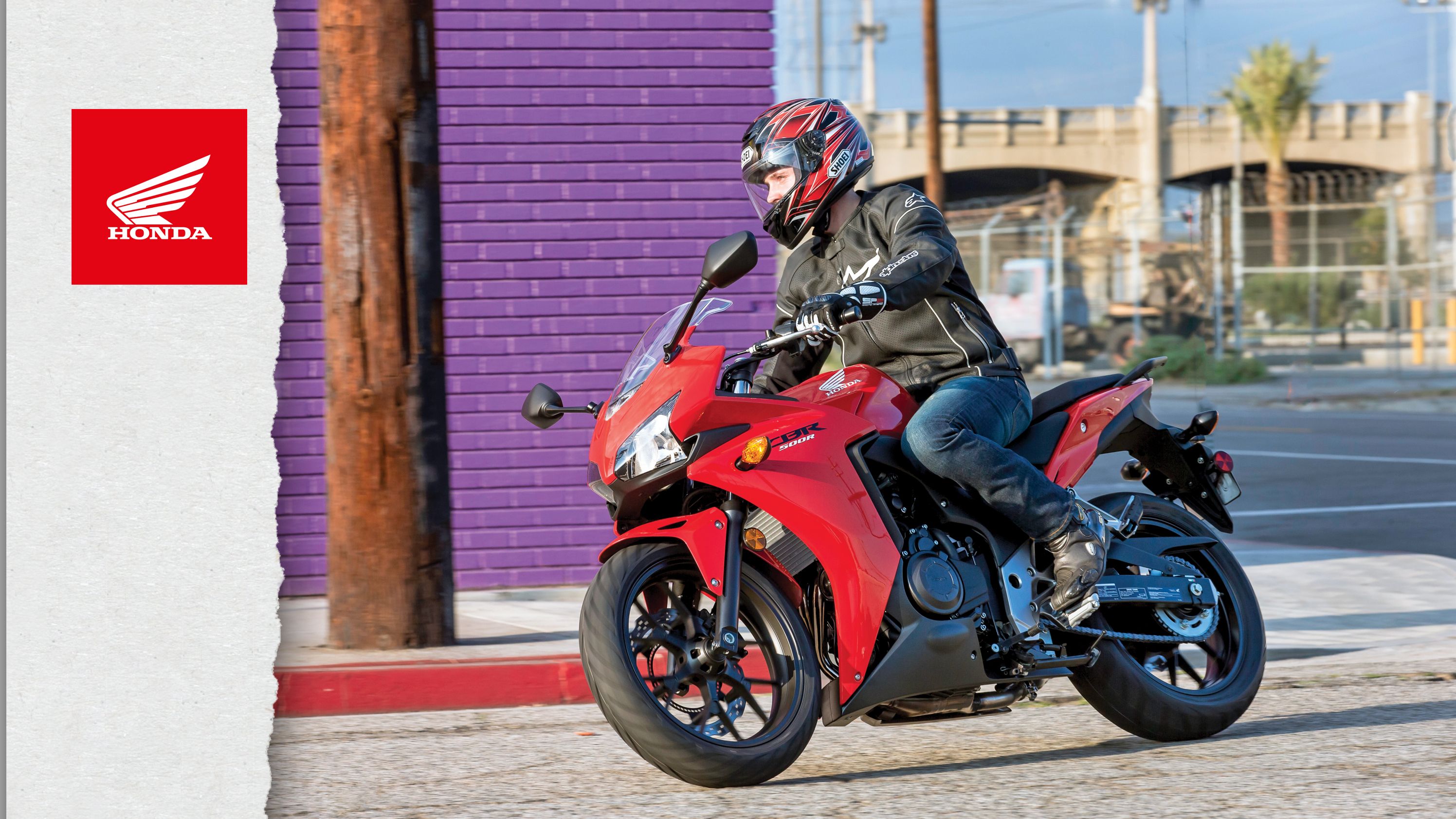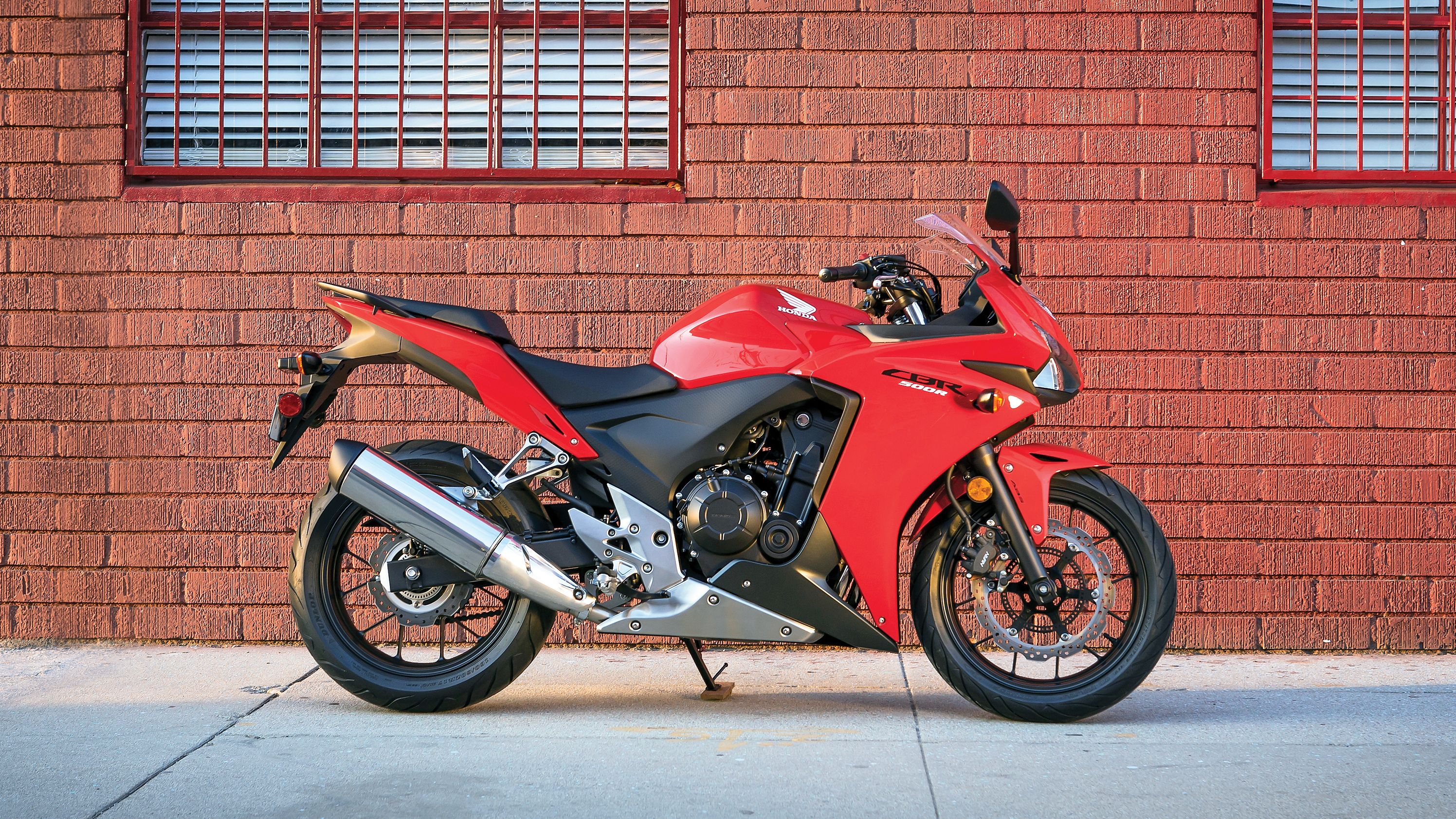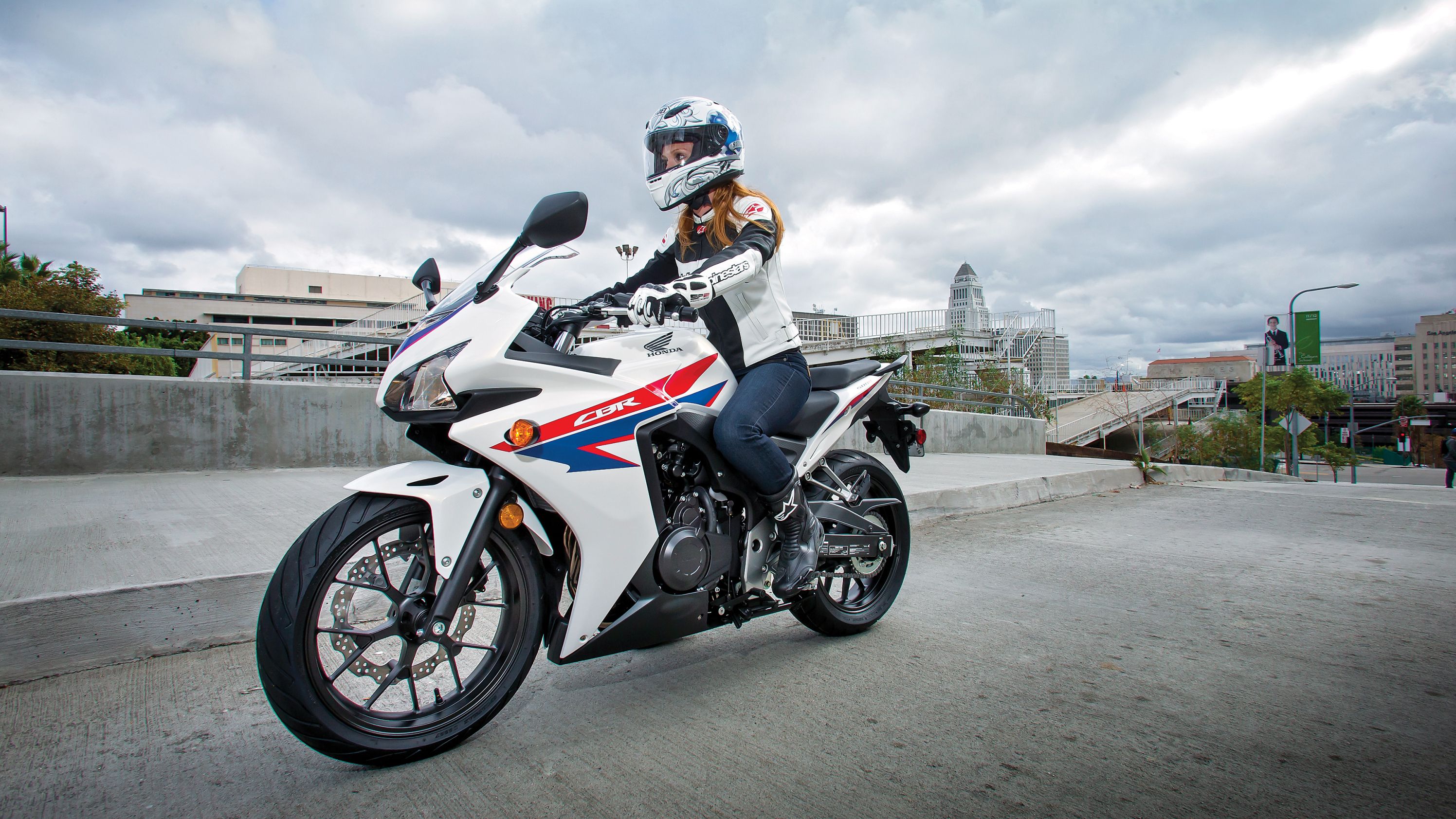Honda started the CB500 twin line back in 1993 to plug a gap in the entry-level market and serve as a mid-size commuter bike – a mission statement that's still valid today. You could consider the CBR500R as the supersport branch of the CB family tree, but with the same 471 cc engine as its closest kin, the CB500F and CB500X. In spite of its sporty exterior, the CBR500R seems to maintain the family tradition of entry-level and commuter service.
Continue reading for my review of the Honda CBR500R.
2015 - 2018 Honda CBR500R
- Make: Array
- Model: 2015 - 2018 Honda CBR500R
- Engine/Motor: Liquid-cooled parallel-twin
Design
Family ties are strong with this one, and it shares design elements with the powerful CBR1000RR, all the way down to the modest CBR300R. The “R” genome indicates full-fairing, supersport look – not as bare as the “naked” CB500F, nor as adventurous as the dual-purpose CB500X.
While the body panels are minimal, the front fairing does protect and streamline the legs and the windshield is adequate to steer the air over you when you want to lay down for that extra little bit of speed. Overall, it's a sporty-looking little bike, but at the end of the day, little more than basic (read: fun) transportation if you plan to use it as a commuter bike. Bags would probably ruin the looks, but without them you can forget about even making a grocery run unless you've got one serious backpack.
Chassis
Most of the 35 mm, steel-tube frame is hidden behind the body panels, and as much as I like the “naked” look with exposed structural components, there is something to be said for fairings that actually move the airflow around the bike and rider. The body panels on this ride do so, and they lend an air of modesty by keeping all the internal “unmentionables” concealed from casual view.
Honda went with a single, 320 mm disc and dual-pot caliper for the front brake, and a 240 mm disc with a single-cylinder caliper in back. While I do like to see dual front brakes whenever possible, the 500R weighs in at only 425 pounds soaking wet, so I reckon it gets a pass on the single front brake here. At least the front disc is really big, and both front and rear discs have a wave-cut profile that quickly dissipates heat. An anti-lock brake system rounds out the brakes, and adds another new-rider-friendly facet to the bike.
A stiff, 41 mm fork supports the front of the bike on 4.3 inches of travel, and a Pro-Link monoshock floats the rear on 4.7 inches of travel. As expected, the rear shock has a preload-adjustment feature, but it does come with nine presets – quite a few more than usual. Seat height is in the mid-range at 30.9-inches tall, and the rider triangle is set to accommodate average riders, while tall riders can stretch out enough to avoid that crowded feeling.
|
Front Suspension: |
41mm Fork; 4.3 Inches Travel |
|
Rear Suspension: |
Pro-Link Single Shock With Nine-Position Spring Preload Adjustability; 4.7 Inches Travel |
|
Front Brake: |
Twin-Piston Caliper With Single 320 mm Wave Disc |
|
Rear Brake: |
Single-Caliper 240 mm Wave Disc |
|
Front Tire: |
120/70-17 |
|
Rear Tire: |
160/60-17 |
|
Rake: |
25.5 Degrees |
|
Trail: |
4.01 Inches |
Drivetrain
Now for the beating heart, a 471 cc, liquid-cooled, parallel-twin engine that shares design features with its big brother, the CBR600RR. The internal engine dimensions are nearly square with a bore and stroke of 2.6378 inches and 2.7086 inches, respectively, and the piston size is the same as the 600RR. A dual-overhead-cam setup uses four valves in each head for unimpeded aspiration, and a pair of 34 mm, PGM-FI, fuel-injected throttle bodies control the intake for precise throttle response and emissions control. The six-speed transmission gives you enough gears to manage your rpm fairly well, though the first gear seems a bit short.
Riders all agree that this is a sporty sled that is fun to ride. While Honda is keeping the official numbers under its hat, I have seen a guy (regular guy, not a pro rider) turn in a 0-to-60 time of 5.15 seconds, and have heard another claim of 116 mph for a max speed; plenty fast enough to keep yourself from being rear-ended on the interstate. While this is also fast enough to get in plenty of trouble, I would still consider the power deliver to be, in a word, unintimidating. This is a good thing though; newbies will be able to ease their way into the sport at their own pace, and they won't outgrow the bike too quickly.
|
Engine: |
Liquid-Cooled Parallel-Twin |
|
Displacement: |
471 cc |
|
Bore and Stroke: |
67.0 mm X 66.8 mm |
|
Induction: |
PGM-FI With 34 mm Throttle Bodies |
|
Ignition: |
Computer-Controlled Digital Transistorized With Electronic Advance |
|
Compression Ratio: |
10.7 to 1 |
|
Valve Train: |
DOHC; Four Valves Per Cylinder |
|
Transmission: |
Six-Speed |
|
Final Drive: |
O-Ring-Sealed Chain |
Price
The price tag for 2018 is well with entry-level range at $6,599 for the base model and $6,899 for the ABS model – a straight-up carry-over from last year -- and it comes standard with a one-year, unlimited-mileage, limited warranty. Both models come in Pearl White, but you can score the ABS model in Grand Prix Red. Extended warranties are available through the Honda Protection Plan.
|
Warranty: |
One Year Transferable, Unlimited-Mileage Limited Warranty; Extended Coverage Available With A Honda Protection Plan. |
|
Colors: |
|
|
2015: |
Black, Silver Metallic |
|
2016: |
Red, Matte Black Metallic, Pearl White |
|
2017: |
Red, Black/Candy Orange |
|
2018: |
Pearl White (ABS model: Grand Prix Red) |
|
Price: |
|
|
2015: |
$6,299 |
|
2016: |
$6,499 (ABS: $6,799) |
|
2017, 2018: |
$6,599 (ABS: $6,899) |
Competitor
The 500 cc engine makes the CBR500R something of an odd duck as it falls between the more-populated 300 cc and 600 cc brackets. With that in mind, my competitor isn't precisely an across-the-board match, but it should certainly appeal to the same sort of buyer; the RC 390 from KTM.
Both of these rides carry quite a bit in the way of angular design characteristics, thus making them at least look somewhat similar though the CBR lacks the harsh edginess we see with the RC. Honda also provides for more rider protection with a somewhat larger air pocket in which to tuck even as the RC pulls the rider forward into a more aggressive forward lean. Personally, I prefer to have the choice of tucking in or sitting more upright, so the Honda wins out there. The Red Riders also score in seat comfort; namely because I've sat on cinder blocks that were more comfortable than KTM's seats, and the block wasn't moving down the road with all the little motions and bounces that come along with that.
In spite of the full front fairing, KTM manages to show plenty of frame from midway back, and that lends the bike an industrial look that I do find pleasing. The RC gets more serious at the front end with inverted, 43 mm forks versus the standard, 41 mm stems on the CBR, but neither offer anything beyond the obligatory preload adjustment at the rear shock. Frame layout and suspension components leave the RC a bit taller in the saddle at 32.28-inches high where the RC is friendlier to the vertically-challenged with a 30.7-inch loft. Both are equal in brakes as well with a single, 320 mm disc up front, and only a 10 mm advantage to Honda at the rear.
The powerplants see some separation, and not just in displacement. KTM likes its thumpers, and it uses a 373 cc one-lung plant with 42 horsepower on tap to drive the RC. Honda, on the other hand, uses its parallel-twin that displaces a total of 471 cc and produces around 47 ponies. Not a big diff here, and neither are what you would call an intimidating machine to ride. In fact, both are manageable and appropriate for the entry-level and mid-displacement market. I will say this on the mills; thumpers vibrate. A lot. Even more than my Harley. With that in mind, I'm going to call the Honda a bit friendlier to ride because yeah, numb hands and nether regions are no fun, m'kay?
He Said
“To be honest, I usually don't dig Hondas very much, even though my little 450 Rebel was a great little bike, may it rest in peace. Having said that, I have to say the CBR500R has a certain appeal. If not for the lack of storage capacity, I would rate this as a top-notch commuter bike.”
She Said
My wife and fellow writer, Allyn Hinton, says, "The lack of storage leads me to question its suitability as a commuter, I mean it looks like you couldn't even carry a cellphone or a pack of smokes on the bike itself without a trip through the accessories catalog. Having said that, I can definitely see it as a weekend fun bike, and at least you can take a passenger on your adventures, if nothing else.”
Specifications
|
Engine & Drivetrain: |
|
|
Engine Type: |
Liquid-Cooled Parallel-Twin |
|
Displacement: |
471 cc |
|
Bore and Stroke: |
67.0 mm X 66.8 mm |
|
Induction: |
PGM-FI With 34 mm Throttle Bodies |
|
Ignition: |
Computer-Controlled Digital Transistorized With Electronic Advance |
|
Compression Ratio: |
10.7 to 1 |
|
Valve Train: |
DOHC; Four Valves Per Cylinder |
|
Transmission: |
Six-Speed |
|
Final Drive: |
O-Ring-Sealed Chain |
|
Chassis: |
|
|
Rake: |
25.5 Degrees |
|
Trail: |
4.01 Inches |
|
Front Suspension: |
41mm Fork; 4.3 Inches Travel |
|
Rear Suspension: |
Pro-Link Single Shock With Nine-Position Spring Preload Adjustability; 4.7 Inches Travel |
|
Front Brake: |
Twin-Piston Caliper With Single 320 mm Wave Disc |
|
Rear Brake: |
Single-Caliper 240 mm Wave Disc |
|
Front Tire: |
120/70-17 |
|
Rear Tire: |
160/60-17 |
|
Dimensions & Capacities: |
|
|
Wheelbase: |
55.5 Inches |
|
Seat Height: |
30.7 Inches |
|
Curb Weight: |
423 Pounds (ABS: 427 Pounds) |
|
Fuel Capacity: |
4.4 Gallons |
|
Details: |
|
|
Emissions: |
Meets Current EPA Standards. California Version Meets Current CARB Standards And May Differ Slightly Due To Emissions Equipment. |
|
Factory Warranty: |
One Year Transferable, Unlimited-Mileage Limited Warranty; Extended Coverage Available With A Honda Protection Plan. |
|
Colors: |
|
|
2015: |
Black, Silver Metallic |
|
2016: |
Red, Matte Black Metallic, Pearl White |
|
2017: |
Red, Black/Candy Orange |
|
2018: |
Pearl White (ABS model: Grand Prix Red) |
|
Price: |
|
|
2015: |
$6,299 |
|
2016: |
$6,499 (ABS: $6,799) |
|
2017, 2018: |
$6,599 (ABS: $6,899) |
References
See our review of the KTM RC 390.


